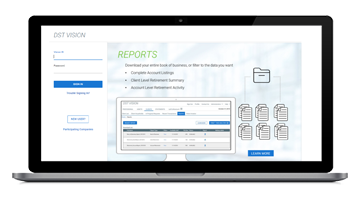John P. Bryson
Hello and welcome to the Portfolio Intelligence Podcast. I'm your host, John Bryson, head of an investment consulting and education savings at Manulife| John Hancock Investments. Today is March 8 and that means it’s International Women's Day. To celebrate that, I've invited two women―top … not two internationally known women, but two that are known to rock the microphone to the podcast to talk to us about financial services and women's impact there. First, we have, Kathleen Pritchard, director of practice management at Manulife John Hancock Investments, and Megan Hopps, divisional sales manager at Manulife John Hancock Investments. Ladies, welcome to the podcast.
Megan Hopps
Thanks for having us, John.
John P. Bryson
You got it. I'm excited. Hey, Megan, I'm going to start with you, and I want to talk about the marketplace. What are some of the key trends in asset management that indicate the growing importance of women as investors and decision makers?
Megan Hopps
Yeah, I appreciate that question. It's … it's a really good topic to to discuss and becomes more and more important each year. So I believe that women are a major economic force. They influence about 80% of consumer spending, which shows their importance as decision makers in each household. It's an interesting topic that we talk about frequently with financial advisors and also because women typically live longer than men, so they will end up inheriting the majority of the wealth in the world.
Right now, actually, women control about $10 trillion in assets, but that is expected to reach $30 trillion by 2030, which is only five years away. That ends up being about two-thirds of the nation's wealth. Now, I read something recently, a few years back, in the Family Wealth Advisors Council, where it showed that there are more women billionaires than ever before. Their collective wealth is about $913 billion. So a lot of opportunity out there as women as decision makers.
John P. Bryson
I think it brought some stats. I'm going to have to fact check my own family stats because I don't think I make 20% of the decisions in a family with three women. I'll have to find out. But good stuff. Great start there. Hey, Kathleen, bringing you into the conversation. Can you … can you share some demographics around women investors that maybe financial advisors should be aware of when they're thinking about how to tailor their services to this market?
Kathleen Pritchard
Yeah, sure John, that's a great question. And there's really a lot of exciting news here. Women have really made enormous strides in so many different areas. For example, let's start off by talking about education. More women are now graduating from college than men. Let me just repeat that. More women are now graduating from college than men. So today, 58% of bachelor's degrees, 61% of master's degrees, and 55% of doctoral degrees are earned by women.
And you can really walk around any college campus and you're likely going to see this change. And this education will lead to more gains in business, politics, and investing. So let's talk about business for just a minute. Today, women are starting 47% of all new businesses in the United States, and they actually own already 39% of the businesses in the U.S., generating 1.8 trillion annually.
And in corporate America, women hold over 30% of board seats today. And we've also seen an increase―it's not where it needs to be―but we haven't seen an increase of 27% in the number of women in the top 1,000 executive positions in the Fortune 100 companies. That's really since 1980. Now, when it comes to politics, we see women in politics all over the country and local politics and national politics.
We have women mayors in 33 of the 100 largest U.S. cities. They actually comprise over 33% of state legislators. They hold 28.7% of the seats in Congress and 26% of the seats in the U.S. Senate. We also have 13 female governors and 33 female lieutenant governors. And through 2024, we actually have had 66 women who've held a total of 74 different cabinet positions.
And finally, of course, we have had our first female vice president and we have had two female major party candidates, although they didn't succeed in breaking that glass ceiling. So I think then when it comes to investing, and Megan just talked about the wealth that women are controlling and that they're expected to control, but we also see that when it comes to investing behavior―today, 30% more married women are making investment decisions than just five years ago.
So all in all, just some really impressive progress when it comes to women across all aspects of life in America. And as Megan said, women are really a force to be reckoned with, and it's really important that financial advisors understand that.
John P. Bryson
Yeah. It's great. Again, some great stats and … and a force to be reckoned with. I love to hear that. Hey, Megan, the primary audience for our podcast is financial advisors. What communication strategies have you found as you're out talking to advisors and clients? What strategies are most effective in engaging women clients, and how did that … how might that differ from engaging a male client?
Megan Hopps
Yep. I believe that the best communication strategy really revolves around increasing a woman's confidence and doing that by educating them on investing, helping them, and teaching them how to help reach their goals. So I think back to my own family, you know, when I was a kid, my grandmother and mother knew nothing about investing. I didn't learn much as a kid or even throughout college.
My foundation really came when I joined this industry in 2003. So, the earlier you can teach your … your family, your friends, your clients to invest or more about investing and the importance of financial literacy I would encourage you to do that.
Megan Hopps
When it comes to communication, it really starts with an understanding of … of who the client is, what's important to them, and building that personal connection. An advisor once shared with me that it's the BLT factor, which stands for you must believe, like, and trust that individual. And I believe that trust is only built over time and consistency. I'm a huge believer that empathy and transparent … transparency matters when you think about communication style.
So when I think about overall communication and in a strategy that helps women achieve their goals, it should really be focused around financial security, financial independence, and helping them hit their goals. And then of course, investing according to their values. So that’s how I view it.
John P. Bryson
Love it. I love the, you know, increasing women's and even kids confidence in financial markets. It can be a little scary, but if you put it in a little bit of work, you can get, get more and more comfortable.
And I love the, you know, you must be believable, likable and trustable. The BLT factor. That's great stuff. Thank you. All right, Kathleen, coming to you, speaking with the financial advisors, how can financial advisors build trust in long-term relationships with women clients that might have some different financial goals and concerns? Kind of what, Megan had said.
Kathleen Pritchard
Exactly. I want to follow up on the comments that Megan just made because that's an important part of building trust. But I think it's really important that financial advisors get to know their women clients as well as they know their male clients. So here's what I mean. They need to understand what's important to them, what their values are, what their goals are.
And when I talk to financial advisors, I always ask, how well do you know your women clients? Do you have an understanding of how they grew up? Do you know where they went to school? Do you know about their careers and their professional successes? What about other contributions that they may have made or are making in society, such as philanthropic efforts?
What's their relationship with their children, with their parents? With other family members? What do they do in their free time? What are their hobbies? What are the things that they love? You know, research shows that women value the need for expert advice more highly than men do, which is really great news for financial advisors. They actually prefer to work with a financial advisor rather than to DIY their investments in financial planning.
And it's also important to understand that when women ask for advice, they're more likely to be referring to goals-based wealth advice to help them meet their goals. And one thing that I just want to share, you know, I've been in this business 39 years and have had many sit downs with financial advisors as a client, and I cannot tell you how many times I was dismissed in those meetings, and how my husband would look at that financial advisor and say, you're talking to the wrong person.
You need to be talking to her. And they would turn to me and they'd say, oh, so, Kathleen, what do you do? And I would start laughing and say, you might have wanted to ask that first. So, I don't think it's intentional. It's just longstanding habit. So I really, really encourage financial advisors to get to know their women clients. It's so critical.
John P. Bryson
I think that's great insight. From the investment consultant team, we talk a lot about goals, but we probably don't spend enough time talking about values. We talk a lot about, the “what we do.” But we encourage advisors just talk about the “why,” “why do we do it” with your clients. And I think that fits in really well.
Be a better listener than a talker would probably be the third thing I would say that all of us could benefit from. So great advice there. Okay, Kathleen, I'm going to, pivot back to you in a minute, but I want to come back to Megan here and talk about specific financial products. Megan, are there any specific financial products or services that are particularly appealing to women investors, and how wouldn't advise you go about kind of presenting those ideas?
Megan Hopps
Yeah, Jonathan, answer that question, but I want to before I answer that question, I want to go back to what Kathleen said because I think those questions that she brought up were really important. And what I mean by that is I can't reiterate enough to do, you know, the discovery questions when you're speaking to a female, female prospect or client.
And what I mean by that is it sounds like common sense, but it's uncommon in practice to actually ask those questions. Everybody knows that they should do it, but no one actually does it … is what I find out there. So when they do do it, it's very rare. And it is noticed as a differentiator to … to women as clients and prospects.
But back to your question. I know you asked about product and customization and anything that would be particularly appealing to female or women investors. The way I think about it is … I really don't believe that there's any specific product that might be more appealing or different for a man versus a woman, but I do believe that, you know, a personalized strategy is the best approach.
Depending on that individual individual's risk, time horizon, and risk tolerance. Statistically, though, on average, women tend to trade less than men about 45% less, and tend to be more conservative and diversified. I find that women prioritize long-term stability. They prioritize security over short-term gains, and this tended … tends to lead to outperformance over the long term.
Another thing to take note of is that women tend to be very loyal and follow the advice given to them when they're given a personalized strategy.
John P. Bryson
I love how we focused on what women are doing right and what not, what men are doing wrong, because we could have quite a deep conversation on that. So thank you.
Megan Hopps
We're keeping it positive, John.
John P. Bryson
I love it. Hey, Kathleen, I said I was coming back to you. I want to talk a little bit about some of the unique financial challenges that women face and how … how can advisors help them overcome those challenges.
Kathleen Pritchard
That's a great question, because we've spent a lot of time talking about all of the strides that women have made over recent decades, but women still have a unique set of challenges. And I think the biggest one is the wage gap, the income gap. So today, on average, unfortunately, we still have a significant wage gap. Women earning $0.82 on the dollar for every dollar a man earns.
However, the positive news is it used to be $0.65 back in 1982. So we are getting better with this wage gap. There's … there's really two primary reasons why this can happen. The first is that many women are still taking time off to raise a family and or take care of an aging parents. In fact, according to Bloomberg, for each child a woman has, her income can decrease by 4%.
And although it's starting to change, many women may choose a career in an industry that doesn't pay as much. But despite that, there's still some great news out there. So today, 45% of women make as much as their spouse, or they are the primary breadwinner at home. And I will tell you on the street that I lived on before I moved to Tennessee, I would say that 75% of the women on our street were the breadwinners and the men were stay at home parents, and that was so shocking at first.
But this is becoming more and more common. So another really important challenge that women face today is that only 41% of women in the U.S. feel confident in investing. And now it's interesting because women frequently respond with, I don't know, to financial questions, which actually shows a lack of confidence, not a lack of knowledge, because when you dig deeper, you often find out they do know.
They just weren't confident in their answer. And that's despite the fact that 67% of women are investing outside of their retirement plans. So I really believe that financial advisors play a critical role when it comes to educating the women clients on investing and wealth management issues.
John P. Bryson
Yes, I think it's great that we're closing the gap, and I think it's great that women aren't overconfident. It's something we see so often in financial services that people are overconfident with the decisions they make. I wish they were more confident, but I'm glad they're not overconfident, is … is my point. Hey, Megan, back to you again. Talking about, your interactions with financial advisors. What type of events have you seen be successful?
John P. Bryson
Kind of engaging women? When it comes to the investment world.
Megan Hopps
I've participated in an a number of successful events over the years. I would say that some of my favorites … they've revolved around either Women's History Month, which … which is in March, which is right now, or around Mother's Day. One in particular, they named it Women Sharing Wisdom and this financial advisor decided to bring as many generations, so roughly three generations at times, or mother daughter, different types of friendships throughout women.
Basically, it was a group of about 30 women in the room, and it was nice to see multiple families with different generations there. And what they did is they asked each woman to share the best piece of advice given to them by another woman. And although it sounds really simple, it was one of the most moving, inspirational events that I've ever been a part of which I thought was pretty neat.
I've been a part of, women's events where it was a focus around longevity and what they did is they ended up inviting in a panel of experts. So they got a CAP-certified contractor which really focuses on, contracting work or renovations that help you age in your home that included a long-term care expert, a social security expert, an estate-planning attorney, and a sleep specialist.
So that was pretty interesting. In the last about year, year and a half, I've heard one or two advisors, but I think that this is becoming significantly more popular, do events for women targeted around the ages of 40 to 60, around peri- and menopausal health coaches and teaching women or coaching women on how to live a happier, healthier life through that stage of life, which I thought was something different.
I've never seen that before, but it's gained quite a bit of popularity, all in the last year or so, and I'm seeing a lot more conversation around that topic. And then the last few I'd add … and there's 529 plans or education events. I would say that bringing in a college counselor, or a 529 specialist, we've had pretty, pretty strong success with, especially when the kids are somewhere between the ages of 5 to 18 years old, just helping inform and educate families on what that process looks like.
I would say another piece to throw in there no matter what type of event. You know, I've seen events really large, really small. I find that the ones that women open up more when it's more intimate, and it's on the smaller side. So roughly between 10 and 30 women in the room. I feel like women tend to open up and share a little bit more information with that size.
John P. Bryson
So a couple things that popped out to me. You know, we're the sandwich generation and a lot of times it falls on the women to kind of be the caretaker for both the younger and the older generations. You mentioned right in there, kind of preparing for that for themselves and for the generations whether it's you got to make renovations at home, you get to plan differently for longer, life spans, etc..
So that's … that's really powerful and interesting stuff. And I never thought about the smaller, more intimate events. They go a long way. We know that as professionals, the smaller, more intimate events go a long way. Taking that even further with women's great insight. Hey, Megan, I want to stay with you. You need to think through the role, the advisor, and how they interact.
What's the role of networking in terms of reaching more women clients? And how can advisors leverage referrals from existing female clients?
Megan Hopps
That's a great question. So I think women are natural networkers. And what I find, at least amongst the women that I talk to is they're very open to giving referrals. If they they've got the BLT factor with their financial advisor, if they've got a great relationship with them, they are more than happy to share their name with their network.
I always find that, you know, when I talk to financial advisors about asking for referrals, sometimes they can feel a little bit awkward. But I do believe that if you have a genuine relationship with that client, I would frame it in a way where you can say something along the lines of, you know, I really enjoy working with you, Mrs. Hopps.
I would love your advice on how I find more clients like you. So that way you're not asking for the referral, you're asking for the advice, and the client doesn't feel like they have the ownership. That if if the person they were for doesn't work out, they're not responsible since they're just asking for advice. So that's one way I've seen it be successful in the past, I would say.
Another way that I've seen it successful is that when you do get a referral in from another client, giving a small gift or a small token to the person that referred the new client, but not just doing it on your own. I'll give you an example by that, John. I say if Mary referred, call it Joan.
The advisor would go to Joan, who's the new client and say, you know, I'm really grateful that Mary introduced us. I want to do something nice for her, but I'm sure that you know Mary on a different level than what I do. I was thinking about doing x, y, or Z, but I'd love your thoughts on what you think she'd enjoy most.
And that way, you get to learn something about Mary on a different level than what you may already know. But then also Joan knows that how much you appreciate the referral and that maybe that if she referred someone that you know, she might get something nice in return as well. So I've seen that be successful. As well as a tactic to … to try to get more referrals and to network with … with more women.
John P. Bryson
And I think we all know instinctively people like to do favors for each other. People like to give advice, you know, they feel like they're contributing. So those are great ways to do that. Kathleen, got a question for you. We look at the biggest opportunities going forward. What do you think they are for financial advisors to expand their business with women clients? And how should they prepare for these types of opportunities?
Kathleen Pritchard
Well, John, that's a great question. And one of the statistics that's really shocking to most people is that 94% of women will have sole responsibility for their finances at some point in their lives. That's nine out of 10 women right there. Why does that happen? Well, it happens a lot of times because of widowhood. As an example, we know that women have longer life expectancies than men, but it also can happen because of divorce.
It can happen because more and more people are choosing to stay single. And we do know that, you know, for divorce, when it comes to marriages, 20% of marriages fail in five years, 53% in 10. And if over 50, one in four are divorced. So we've been talking about this need to build relationships with women clients for over 30 years that I've been in this business, but we haven't seen a lot of progress.
In fact, research tells us that 70% of widowed women will switch financial advisors within one year of their husband's death. So what does that tell you? I mean, the real bottom line here is that women are already controlling significant wealth. As we've talked about. They're expected to control the majority of wealth in this country by 2030. They're becoming better educated than men.
They're beginning to earn as much or outearn their partners, many even becoming the primary breadwinner. So it's really critical that if a financial advisors going to be successful, they need to be successful with women if they want their practice to continue to succeed. And I think that is one of the most important messages.
John P. Bryson
That's a great way to close. Kathleen, I appreciate that. I'm going to ask one more question of both of you though. There is so much good information here, so many good insight. How can our advisors learn a little bit more? Where is the best place to start?
Kathleen Pritchard
So, I'll take that one. We have a great program called Women, Wealth and Wisdom that is very robust. It is actually having 107 slides. Don't let that freak you out. But the way it's designed is that there's an up front section on women today that's meant to empower women. And then there's actually nine available case studies that dig into wealth management issues.
And they're not fluff. They actually dig deep into these wealth management and financial planning issues. And each case study has at least one, if not multiple, checklists and worksheets that go with it. And once again, these worksheets and checklists are very robust. I'll give you an example. One of the case studies is caring for aging parents and the longevity planning checklist that goes with that is nine pages long.
So that is a great program where you can call on your John Hancock business consultant to deliver that program for your women prospects and clients. And then, of course, we also have investment education and investment education is really critical as well. And it's really critical for the financial advisor to be able to provide that for … for their prospects and clients.
So we have presentations obviously on 5/29 we have something called 10 things that we investors should know about investing. That's really sort of your investment 101. We have a program called History Lessons that really looks at investing through the lens of history. So we have a lot of different resources, and including seminars on Medicare and Social Security and successful businesses, a lot of different, types of client seminars that you can use and leverage from us. And then I'm sure also, you know, your other investment management partners have resources like that as well.
Megan Hopps
I'll add in there. I thought that was really well said. Kathleen. I'll just say, add in there by reaching out to your business consultant. That's local in your territory, you'll be able to get access to all of the programs that Kathleen mentioned.
John P. Bryson
Thank you both. Great insight for joining us today. Really appreciate it. To the advisor audience, our audience, our goal of this podcast is to help you build better outcomes for your clients and a better practice for yourselves. I think what we talked about today goes a long, long way. If you're … if you need to track it down, all this information is available at jhinvestments.com.
And I just want to wish everybody, a wonderful, International Women's Day. And thanks for listening.
Disclosures:
This podcast is being brought to you by John Hancock Investment Management Distributors, LLC, member FINRA, SIPC. The views and opinions expressed in this podcast are those of the speakers, are subject to change as market and other conditions warrant, and do not constitute investment advice or a recommendation regarding any specific product or security. There is no guarantee that any investment strategy discussed will be successful or achieve any particular level of results. Any economic or market performance information is historical and is not indicative of future results, and no forecasts are guaranteed. Investing involves risks, including the potential loss of principal.






